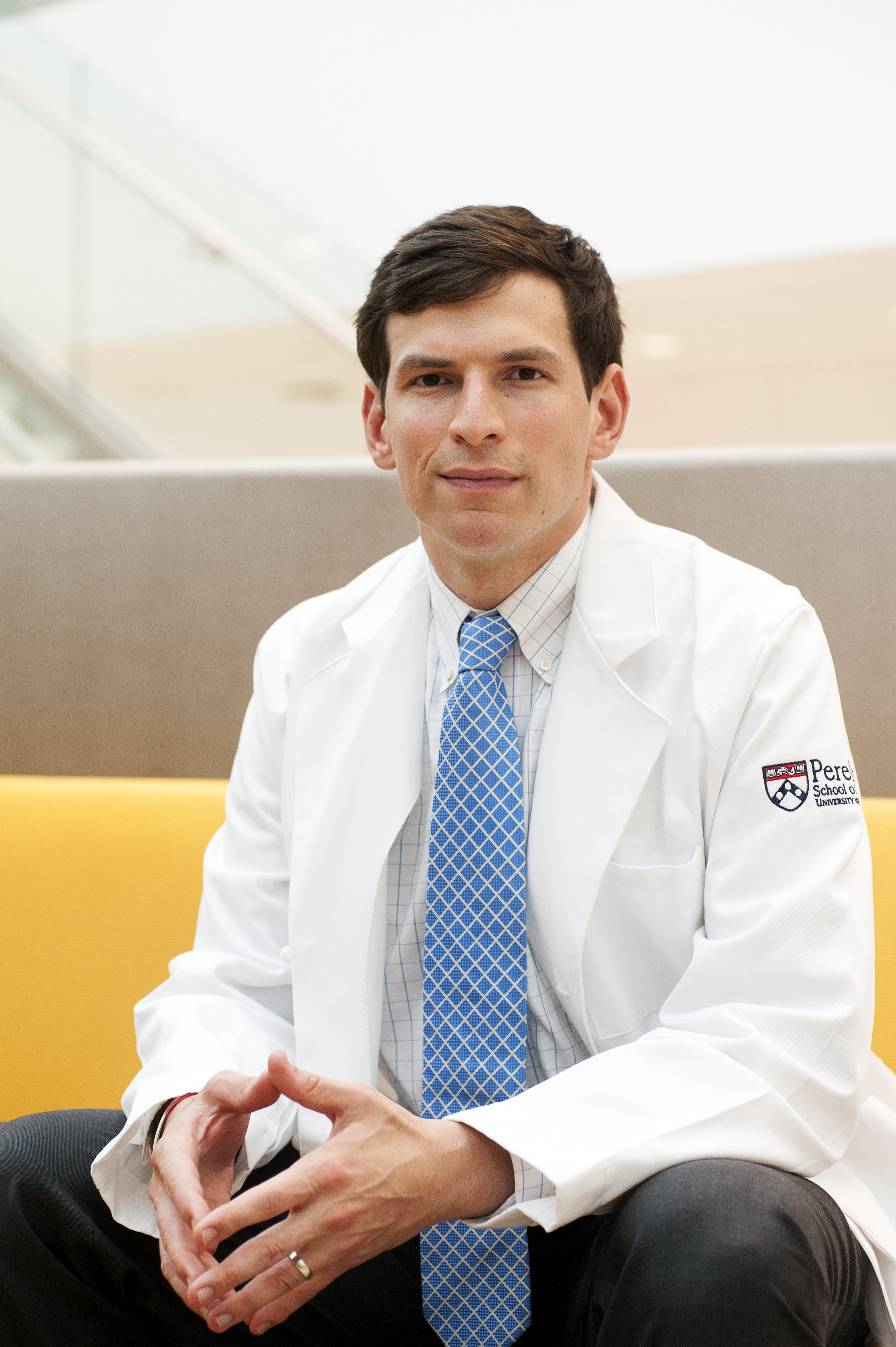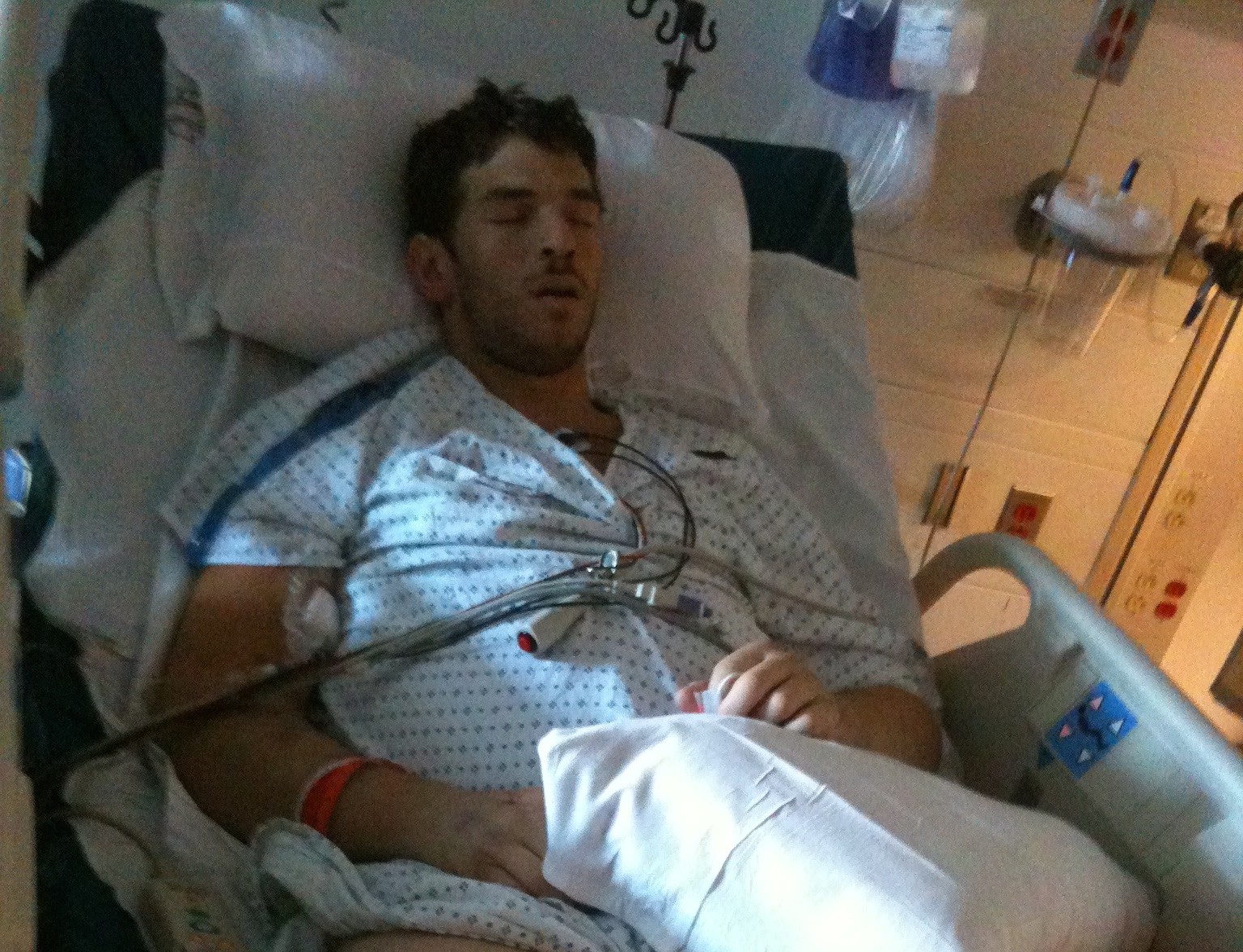I titled my post “Overtime,” because I have considered myself in overtime ever since November 2010 when I had my last rites read to me. I survived, but I would soon find out that my opponent was a deadly and poorly-understood disorder that would try to kill me three more times (so far). I don’t consider myself to be in an “extended” time—I’m in overtime, because I’m fighting to cure my disease (win the game), I’m taking whatever steps I can to drive progress forward, and I’m making every second count.
In August 2010, I was a healthy third year medical student at the University of Pennsylvania with my sights set on becoming a clinical oncologist (today I am an Assistant Professor of Medicine and Associate Director of the Orphan Disease Center at the University of Pennsylvania). I had lost my mom to cancer while I was in college, and I wanted to take out revenge on the disease. During my third year of medical school, I suddenly became ill with a rare and deadly disorder called idiopathic multicentric Castleman disease (iMCD) similar to lymphoma, which causes the immune system to attack and shut down vital organs. Castleman disease strikes over 5,000 people of all ages each year in the United States. As a result, I experienced multi-organ failure and spent over four months in the hospital. Since that first experience, I have had life-threatening relapses requiring combination chemotherapy every 15 to 17 months for the last five years.
After nearly dying, I returned to medical school on a mission. I began to conduct research into the causes and mechanisms of this rare disease, and I quickly observed that the greatest hurdles in the way of finding a cure were actually not medical problems — they were business problems. I found the lack of an overarching strategy, very limited collaboration, and inefficient spending slowing down progress towards a cure.
In the Photo: David Fajgenbaum in the hospital for Castleman Disease. Photo Credit: David Fajgenbaum
I decided to establish the Castleman Disease Collaborative Network in 2012 to overcome these “business problems” and accelerate progress towards a cure through an innovative approach. Typically, disease research organizations first raise money and then invite individual researchers to apply to use that funding how those researchers see fit.
Related articles: “A PROFILE OF A BURNOUT PHYSICIAN”
“THE NEW HORIZONS OF REGENERATIVE MEDICINE: DANNY CABRERA, FOUNDER OF BIOBOTS“
We completely reversed that process. First, we built a global community of 300+ researchers, then we crowdsourced among that expert community to determine the highest priority projects, and finally, we recruited the top researchers from around the world to conduct those projects. In parallel, we have connected and supported over 6,000 patients/loved ones, forged partnerships with major industry and academic organizations, and engaged the public to donate funds to enable our research. Events from “Boot Camp 2 Beat Castleman’s” to “Quest for a Cure” Galas have been put on to raise funds for our research.
Our research has flipped the previous understanding of Castleman disease on its head. We used to think enlarged lymph nodes were the cause of all the problems, but we found that the enlarged lymph nodes are a result of the activated immune system. Therefore, rather than needing chemotherapy to kill the lymph node “tumors,” we can consider using targeted therapies and other immunosuppresants to interrupt the immune system.
We needed to find 25 samples for a rare subtype of a rare disease preserved in a rare way
I certainly could not have accomplished any of this on my own. The success of the CDCN is directly tied to the talents of the CDCN Leadership Team, which is made up of 38 patients, loved ones of patients, physicians, medical students, and business school students—all of us are volunteers, giving between 3 and 30 hours each week to the cause. In 2015, we invested $190,000 in high-impact research and spent $0 on salary or office expenses. Even more important than funding these studies, we enabled studies that could not have been done without the CDCN no matter how much money was available. For instance, one of the top priorities for the community is to do an RNA sequencing study, so we connected with the leading expert, Dr. Ian Lipkin, to do this. Dr. Lipkin agreed to do the study, but would need 25 Castleman disease samples preserved in a way that is almost never done. We needed to find 25 samples for a rare subtype of a rare disease preserved in a rare way. With the help of our leadership team, we identified 29 samples that are in transit from Okayama, Japan; Kanazawa, Japan; Oslo, Norway; Little Rock; Philadelphia; and New York City.
Credit: Castleman Disease Collaborative Network
The blueprint I used for building the CDCN was informed by my previous experience creating another nonprofit organization. When my mother was dying from cancer during my sophomore year of college in 2004, I felt completely alone on campus. No supportive resources existed on college campuses at the time, and I promised my mom two weeks before she died that I would create something in her memory to help other grieving students. I returned to Georgetown’s campus on a mission after her passing, started a campus group that spread to dozens of other campuses, and co-founded “National Students of AMF,” which stood for “Ailing Mothers & Fathers” and my mom’s initials, “Anne Marie Fajgenbaum.” AMF now stands for “Actively Moving Forward.” I had the opportunity to lead an incredible team to grow AMF to reach 3,000+ grieving college students on 200+ college campuses and elevate college student grief to become a recognized issue in higher education. Our work has been highlighted on the Today Show, Reader’s Digest, and The Chronicle of Higher Education. I recently co-authored a book for grieving college students, “We Get It,” which is a top new release on Amazon.
As I write this post, I have recently crossed the average life expectancy for my disease. But, I have hope for me, my family, and the thousands of others with my disease. We have the right model for accelerating research and the right team. Our findings to date have already completely flipped the previous understanding of Castleman disease on its head, and we’re learning how to better treat Castleman disease. In fact, right now, I am on an experimental treatment regimen that is based on my own research at UPenn. It has been 25 months since my last life-threatening relapse—the longest I’ve ever gone—I had previously relapsed every 15-17 months. It seems to be working… for now.
We’re closing in on this disease. We just need more people to join our fight by raising awareness about Castleman disease, joining our team, and raising money for our research.
With the community’s help, I believe we can cure this disease and solidify a blueprint for curing many more.
– Dr. David Fajgenbaum, MD, MBA, MSc











